Disclosure: This article contains affiliate links. We may earn a commission from purchases at no extra cost to you, which helps our travel content.
Let me start by saying Amsterdam isn't just about the obvious - those postcard canals, red lights, and coffee shops that every tourist guide hammers on about. As someone who's visited this city multiple times for both work and play, I've developed a relationship with Amsterdam that goes way beyond the surface level. My buying trips for work have taken me deep into the city's retail landscape, but it's the spaces between appointments where I've discovered the real Amsterdam. This spring weekend guide is perfect for couples looking to experience the city like locals do - at a leisurely pace, with an appreciation for craftsmanship, and with enough insider knowledge to make you feel like you've unlocked a secret version of the city. I've curated these hidden gems based on what I've stumbled upon during my fashion sourcing trips, conversations with local designers, and those magical moments when you turn down the wrong alley and find something unexpectedly perfect.
The Secret Gardens of the Jordaan
The Jordaan district itself isn't exactly a secret, but hidden within this charming neighborhood are Amsterdam's best-kept treasures: the hofjes (hidden courtyard gardens). These secret green spaces were historically built as almshouses for elderly women, but today they offer tranquil escapes from the city bustle that even many tourists who've visited multiple times don't know about.
My personal favorite is Hofje van Brienen on Prinsengracht, which dates back to 1797. The first time I discovered it was purely by accident – I was rushing between meetings with two Amsterdam-based sustainable fashion brands and took what I thought was a shortcut. Pushing through an unassuming door, I suddenly found myself in this perfectly preserved 18th-century courtyard with manicured gardens, blooming tulips, and absolute silence despite being just steps from a busy canal.
What makes these hofjes special is their hidden-in-plain-sight quality. You'll walk past unmarked doors that give no indication of the peaceful gardens behind them. Some are only open during specific hours, adding to their exclusive feel. Cartier's Hofje on Lindengracht and Hofje van Hendrik Bushuys are two others worth seeking out.
The best part? While tourists crowd into Vondelpark, you'll often have these gardens entirely to yourself – or share them with just a few locals reading books on benches. In spring, the gardens come alive with blooms, making it the perfect season to visit. Bring a portable picnic blanket and pick up some local cheeses and bread from Fromagerie Kef on Marnixstraat for an impromptu private picnic.
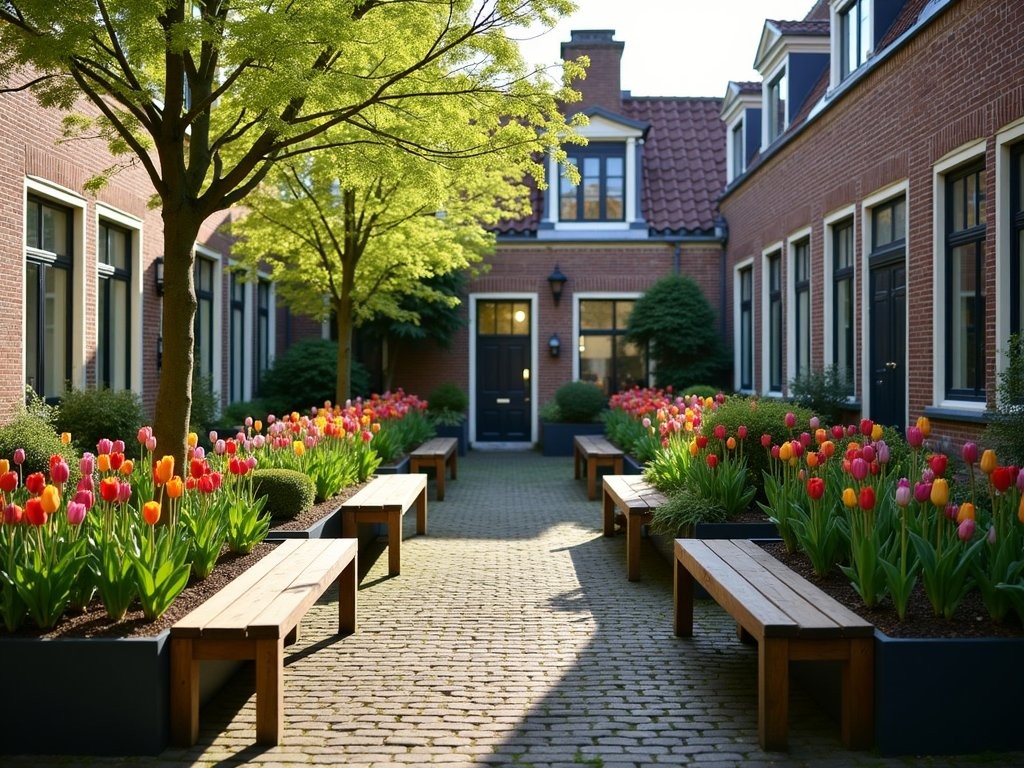
💡 Pro Tips
- Visit hofjes between 10am-5pm when most are open to the public
- Speak quietly and respect that some residents still live around these courtyards
- Photograph the architectural details but be discreet about it
Vintage Fashion Hunting in De Pijp
As a retail buyer who lives for discovering unique pieces, Amsterdam's vintage scene is my playground. Skip the overpriced vintage shops in the city center and head to De Pijp, where the real treasure hunting happens. This neighborhood has evolved from working-class to hip creative district, and its vintage stores reflect that perfect blend of accessibility and curation.
My absolute must-visit is Marbles Vintage on Gerard Doustraat. The owner, Elise, has an incredible eye for statement pieces that still feel wearable. During my last visit, I scored a 1970s Burberry trench coat for €85 that would have cost at least €500 at vintage shops in Milan or Paris. The store is merchandised by color rather than size or gender, creating this visual feast that makes the hunt even more exciting.
Another gem is Zwart (meaning 'Black' in Dutch) on Frans Halsstraat, which specializes in – you guessed it – all-black vintage from Japanese and Belgian designers. It's a minimalist's dream and perfect for couples looking to refresh their wardrobes with timeless pieces that won't scream 'tourist' when you're exploring the city.
What separates Amsterdam's vintage scene from other European cities is the Dutch approach to secondhand – it's less about nostalgic costuming and more about sustainability and unique personal style. Prices are reasonable, and shopkeepers are genuinely passionate about the stories behind their pieces.
I always recommend bringing a packable tote bag for your finds – it folds into nothing in your day bag but expands to hold your vintage treasures. And don't be afraid to ask shopkeepers for their recommendations; they'll often direct you to even more obscure spots not in any guidebook.
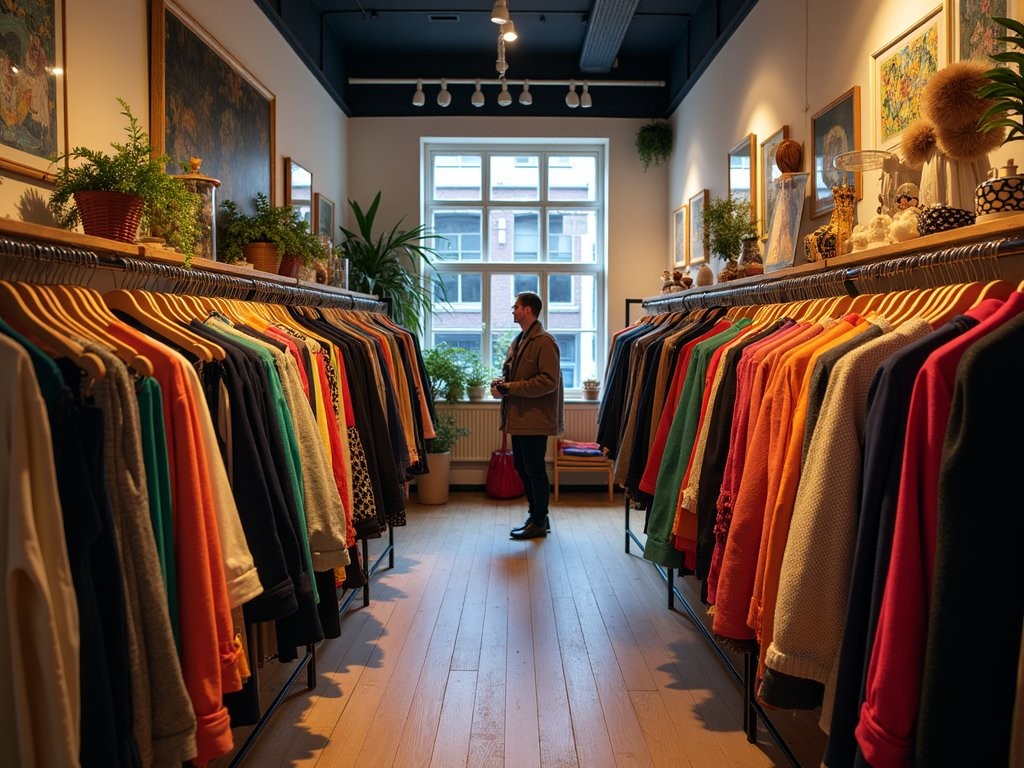
💡 Pro Tips
- Visit on weekday mornings when new stock is often put out
- Bring cash as smaller shops may have minimum card purchase amounts
- Look for the 'kringloop' thrift stores for even better bargains away from the tourist markup
The Micro-Brewery Trail Beyond Heineken
Let's be honest – the Heineken Experience is to Amsterdam what Times Square is to New York: a tourist obligation that locals actively avoid. For a more authentic taste of Dutch brewing culture, I've mapped out what I call the 'Eastern Canal Belt Brewery Trail' that showcases Amsterdam's thriving craft beer scene.
Start at Brouwerij 't IJ, which operates in a converted bathhouse beneath a windmill in the eastern part of the city. While it's not exactly unknown, what most tourists don't realize is that the real magic happens during their limited brewery tours (Thursday-Sunday at 3:30pm). Their brewmaster Bart is a character straight out of central casting – bearded, passionate, and full of stories about Amsterdam's brewing history that go way beyond the standard tour script.
From there, walk 15 minutes to Oedipus Brewing in Noord (you'll need to take the free ferry, which is an experience itself). This artist-run brewery creates some of the most innovative flavor profiles I've encountered – their Thai Thai (a tripel with galangal, lemongrass, and chili) completely changed my understanding of what beer could be. The taproom features rotating art installations and weekend DJs that attract Amsterdam's creative crowd.
End your trail at Butcher's Tears, possibly Amsterdam's most under-the-radar brewery. Hidden in an industrial area in Amsterdam-Zuid, their minimalist taproom serves experimental small-batch beers with names like 'Green Cap' and 'Misery King' that you won't find anywhere else. The founders are as serious about their brewing philosophy as any fashion designer is about their collection concept.
If you're planning to hit all three in one day, I recommend bringing a water bottle to stay hydrated between stops. The walk between breweries takes you through neighborhoods tourists rarely see, offering a glimpse into local Amsterdam life beyond the picture-perfect canals.
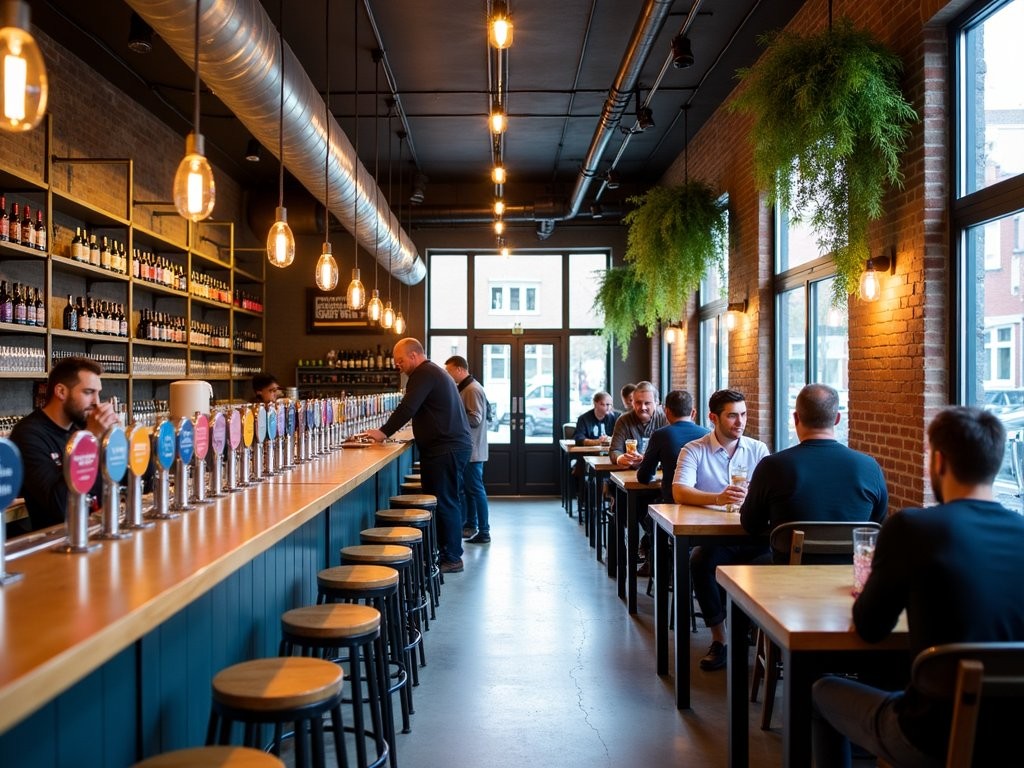
💡 Pro Tips
- Check brewery websites for special tasting events that often happen on weekend afternoons
- Try 'bitterballen' (Dutch meat croquettes) which pair perfectly with local beers
- Ask for a 'proeverij' (tasting flight) to sample multiple brews without the commitment
Noord's Hidden Art Warehouses
Amsterdam Noord has undergone the classic industrial-area-to-creative-hub transformation, but unlike similar neighborhoods in other cities, it still maintains an authentic edge that hasn't been completely polished for tourists. The ferry ride across the IJ from Central Station (completely free) acts as a perfect transition from tourist Amsterdam to local Amsterdam.
My first discovery in Noord was purely accidental. During a sourcing trip for sustainable denim brands, a local designer insisted on showing me her studio in what looked like an abandoned warehouse. That warehouse turned out to be NDSM Wharf, a former shipyard transformed into a sprawling creative complex. What makes this area special is how raw and unfiltered it remains – street art covers nearly every surface, and the creative spaces feel genuinely lived-in rather than curated for Instagram.
Beyond NDSM, there's Noorderlicht Café, housed in a greenhouse-like structure with panoramic views of the water. It's where Amsterdam's creative class gathers on weekend afternoons for organic meals and live music that ranges from jazz to electronic. The café has this perfectly worn-in feeling – mismatched furniture, plants growing somewhat wildly, and a terrace that captures every bit of spring sunshine.
For art lovers, Paintbar offers a unique experience where you can create your own Amsterdam-inspired artwork while sipping local beers. I'm not particularly skilled with a paintbrush, but the instructors guide you through creating something genuinely decent – my canal house painting now hangs in my apartment as a perfect souvenir.
The most hidden gem in Noord is Shelter, an underground club built in a former atomic shelter. Even if clubbing isn't your scene, they host fascinating sound art installations during daylight hours that are worth experiencing for the acoustics alone.
I recommend bringing a compact camera rather than just using your phone – the industrial textures, street art, and unique lighting in these spaces deserve proper documentation. The contrast between the raw concrete structures and the vibrant creative energy makes for compelling photography.

💡 Pro Tips
- Take the free ferry from behind Central Station (look for the 'Noord' signs)
- Visit on weekends when artist studios are more likely to be open to the public
- Follow @noordamsterdam on Instagram for pop-up events that aren't advertised elsewhere
Breakfast Clubs Only Locals Know About
Amsterdam's brunch scene has exploded in recent years, but the city's truly exceptional breakfast spots remain largely under the tourist radar. Skip the pancake houses in the center and head where locals start their day.
My absolute favorite morning ritual when I'm in Amsterdam is grabbing a corner table at Scandinavian Embassy in De Pijp. Despite the name, it's not an actual embassy but rather a temple to Nordic coffee culture and minimalist breakfast design. Their cardamom buns are life-changing – perfectly spiced and not too sweet – and pair beautifully with their meticulously crafted filter coffee. The baristas approach coffee with the precision of scientists, using scales and timers to create the perfect extraction.
For something uniquely Dutch, seek out Winkel 43 in the Jordaan, home to what locals universally agree is Amsterdam's best apple pie (appelgebak). The secret is in the crust – buttery and cookie-like rather than flaky – and the generous layer of cinnamon-spiced apples. The café opens at 8am, and I recommend arriving early before the inevitable queue forms. Grab a seat at the outdoor tables if weather permits and watch the Noordermarkt come to life around you.
If you're looking for a heartier start, Bakers & Roasters in De Pijp serves New Zealand-style breakfast with a Brazilian twist (reflecting the owners' backgrounds). Their eggs benedict with house-cured salmon and Dutch hollandaise has pulled me through many a post-sourcing-trip morning when I needed serious sustenance. The vibrant interior – all plants and bright colors – makes it impossible to have a bad morning.
My insider tip: Dutch breakfast spots fill up quickly, especially on weekends. I always bring a good e-reader to enjoy while waiting for a table or lingering over coffee. The Dutch have a concept called 'gezelligheid' (coziness/conviviality) that makes reading alone in cafés not just acceptable but part of the cultural fabric.
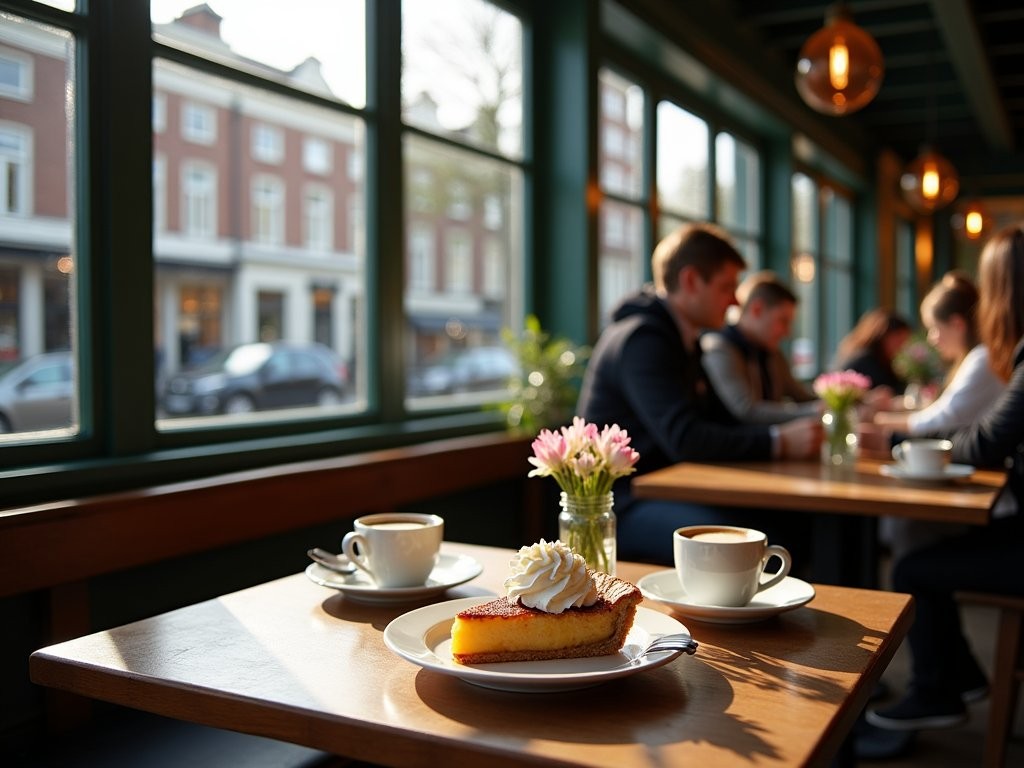
💡 Pro Tips
- Avoid peak times (10am-12pm on weekends) for more relaxed service
- Don't be shy about asking to share a table - it's common practice in Amsterdam's smaller cafés
- Try 'hagelslag' (chocolate sprinkles on bread) at least once for an authentic Dutch breakfast experience
The Floating Garden of Oosterdok
When most visitors think of gardens in Amsterdam, they immediately picture Keukenhof with its tourist buses and ticket lines. But locals know that some of the city's most innovative green spaces are actually floating right on the water, hidden in plain sight.
Oosterdok, the eastern dock area near Central Station, hosts what might be Amsterdam's most overlooked attraction: De Ceuvel. This former shipyard has been transformed into a sustainable community of houseboats pulled onto land, connected by a winding wooden walkway. Each boat houses creative studios, workshops, or small businesses committed to circular economy principles.
What makes De Ceuvel special is its 'Forbidden Garden' – not actually forbidden, but designed as a phytoremediation project where specific plants clean pollutants from the previously contaminated soil. As someone who's always looking for sustainable manufacturing practices in fashion, seeing this real-world application of bio-design principles was fascinating.
The heart of De Ceuvel is Café de Ceuvel, a waterfront restaurant built entirely from reclaimed materials. Their menu changes based on what's growing in their greenhouse and surrounding gardens, and they brew their own kombucha using herbs grown on-site. Grab a seat on their sprawling deck (heated in cooler weather) and watch boats pass by while sampling their incredible plant-forward menu.
Beyond the café, you can arrange tours of the sustainable systems that power this floating community – from solar panels to composting toilets. It's a glimpse into Amsterdam's commitment to innovation that most tourists never see.
Not far from De Ceuvel is another floating wonder – Marineterrein Amsterdam. This former naval base is being transformed into an innovation district, with its most interesting feature being the Floating Gardens project. These experimental modular platforms demonstrate how cities can create new habitats for underwater life while addressing climate adaptation. You can actually swim in the naturally filtered swimming dock during summer months – a favorite lunch break activity for locals working nearby.
For those interested in sustainability and design, I recommend bringing a reusable coffee cup to enjoy drinks from the various eco-conscious cafés while exploring these floating gardens. These spaces represent Amsterdam's forward-thinking approach to urban planning that goes far beyond the picture-postcard canals.
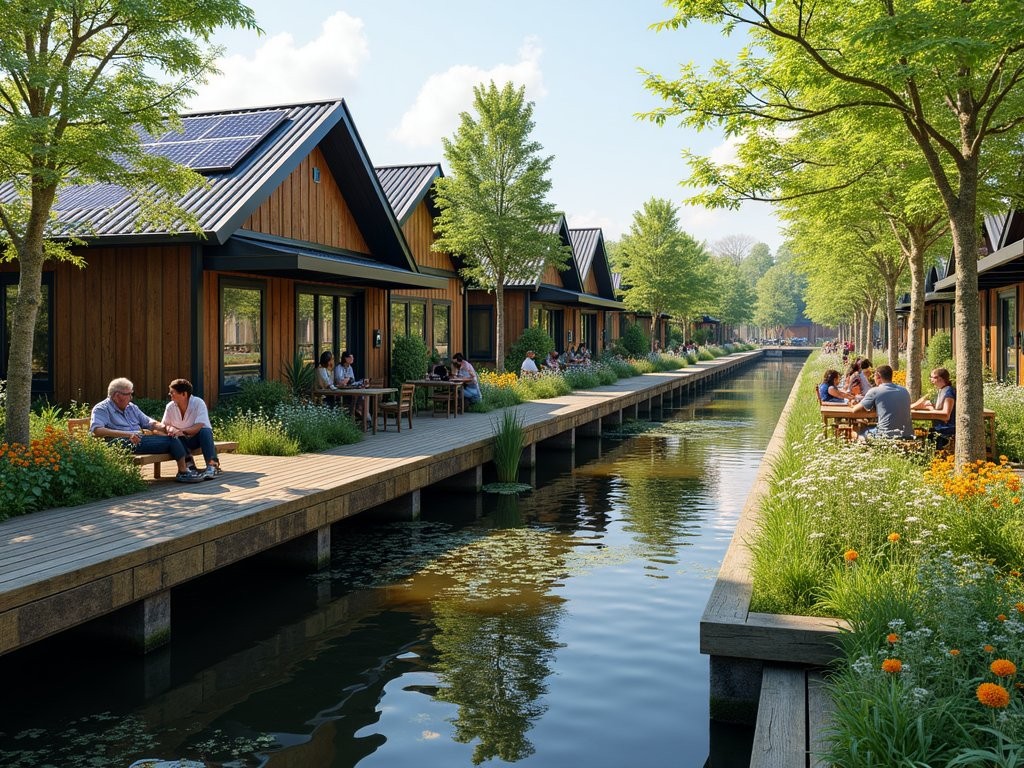
💡 Pro Tips
- Visit on sunny weekdays when the spaces are less crowded but all facilities are open
- Check De Ceuvel's website for workshops on sustainable practices you can join
- Bring swimwear in summer months to enjoy the filtered swimming dock at Marineterrein
The Secret Cocktail Scene of Oud-West
While tourists crowd into the overpriced bars of Leidseplein, Amsterdam's most innovative cocktail culture is flourishing in the residential neighborhood of Oud-West. This area, just a short tram ride from the center, has become the epicenter of Dutch mixology without sacrificing its local character.
My journey into Amsterdam's hidden cocktail scene began when a Dutch denim designer insisted on taking our meeting to a place called Bar Oldenhof instead of a typical café. From the street, it looks like someone's living room – there's no sign, just a buzzer you press for entry. Once inside, the space unfolds like a film set: leather club chairs, vintage books lining the walls, and bartenders in waistcoats stirring drinks with the focus of surgeons.
What separates Amsterdam's cocktail approach from other European cities is the integration of Dutch spirits and ingredients. At Oldenhof, I tried a revelatory cocktail featuring genever (Dutch gin's ancestor) infused with local tulip bulbs – somehow both familiar and completely unique. The bartenders are passionate educators rather than pretentious gatekeepers; tell them what spirits you enjoy, and they'll create something personalized.
Another hidden gem is Grapedistrict, which appears to be just a wine shop from outside but conceals a secret tasting room in the back. On Thursday and Friday evenings, they host 'wine flights' featuring natural and biodynamic producers that rarely export outside the Netherlands. The crowd is predominantly local – creative professionals unwinding after work – and the atmosphere feels like a friend's living room party rather than a commercial establishment.
For something truly unexpected, seek out Café de Ceuvel in Amsterdam Noord (mentioned in the floating gardens section). Their botanical cocktail program uses herbs grown literally feet from the bar in their greenhouse. Their 'Greenhouse G&T' features gin infused with whatever's thriving in their garden that week.
What makes Amsterdam's secret cocktail scene special is its unpretentiousness. Despite the craftsmanship involved, there's none of the speakeasy snobbery you might find in London or New York. It's high-quality drinks in genuinely gezellig (cozy) environments where conversation matters as much as what's in your glass.
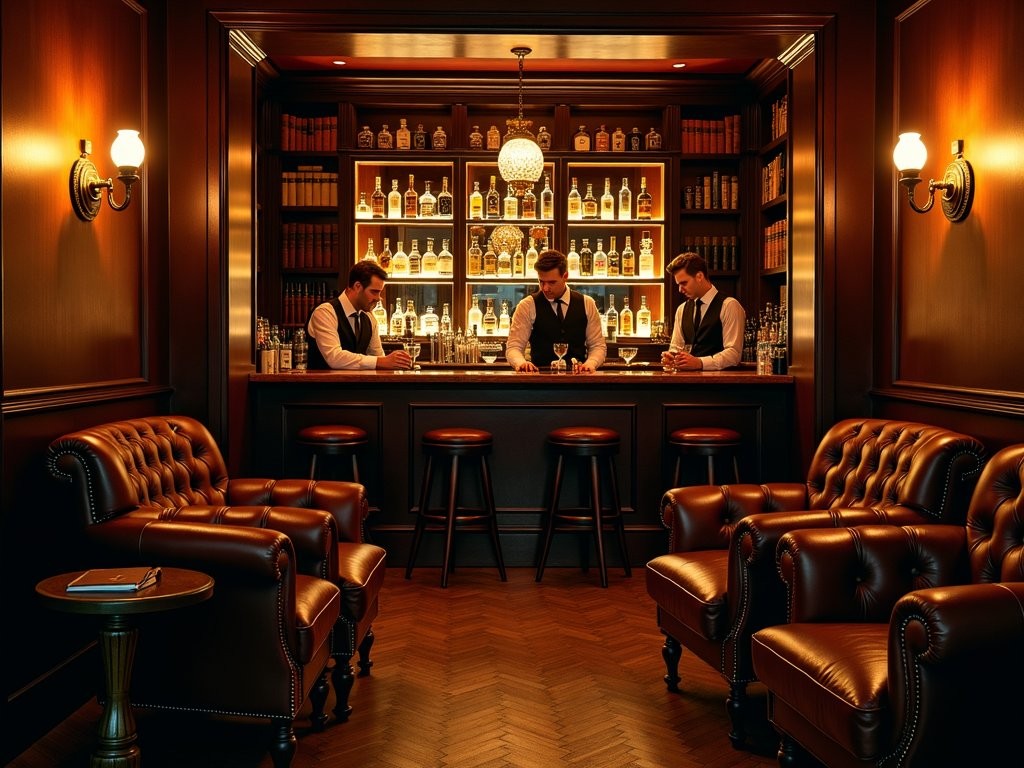
💡 Pro Tips
- Make reservations for Bar Oldenhof via WhatsApp - they limit capacity to maintain the intimate atmosphere
- Visit between 6-8pm for the best chance of chatting with bartenders about their creations
- Ask about 'kopstootje' - the traditional Dutch genever and beer pairing ritual
Urban Exploration in Westerpark
Vondelpark gets all the tourist attention, but locals know that Westerpark offers a more authentic slice of Amsterdam leisure life, particularly in spring when the whole area bursts into bloom and activity. What makes Westerpark special isn't just the green space itself, but the repurposed industrial complex – Westergasfabriek – that borders it.
This former gas factory has been transformed into a cultural hub that houses everything from independent cinema to artisanal food halls. My favorite spot within this complex is Ketelhuis, a movie theater specializing in Dutch and European independent films (many with English subtitles). Their café serves excellent local beers, and you can take your drink into the screening – a civilized approach to cinema that Americans can only dream of.
Next door, you'll find Westergas, a massive industrial hall that hosts different events throughout the year. I once stumbled upon a sustainable fashion market here featuring emerging Dutch designers working with innovative textiles – the kind of authentic local shopping experience that's increasingly rare in tourist-centered cities.
The Sunday market at Westergasfabriek is where locals actually shop (unlike the more famous Albert Cuyp market which now caters heavily to tourists). Artisans sell everything from handmade ceramics to small-batch skincare products made with Dutch botanical ingredients. The food vendors represent Amsterdam's diverse population – try the Surinamese roti rolls for a taste of the Netherlands' colonial history interpreted through contemporary Amsterdam cuisine.
What I love most about Westerpark is how it transforms from day to night. Mornings see yoga classes on the grass and parents with children feeding ducks, while evenings bring young professionals having barbecues and playing music. It's where Amsterdam residents actually live their lives rather than perform for tourists.
For a perfect day, rent bikes from the far less crowded rental shops in residential areas (I recommend Star Bikes on Frederik Hendrikstraat) and cycle through the park's winding paths. Pack a insulated water bottle to keep your drinks cold while exploring – Amsterdam tap water is excellent, and staying hydrated is key when cycling around the city.
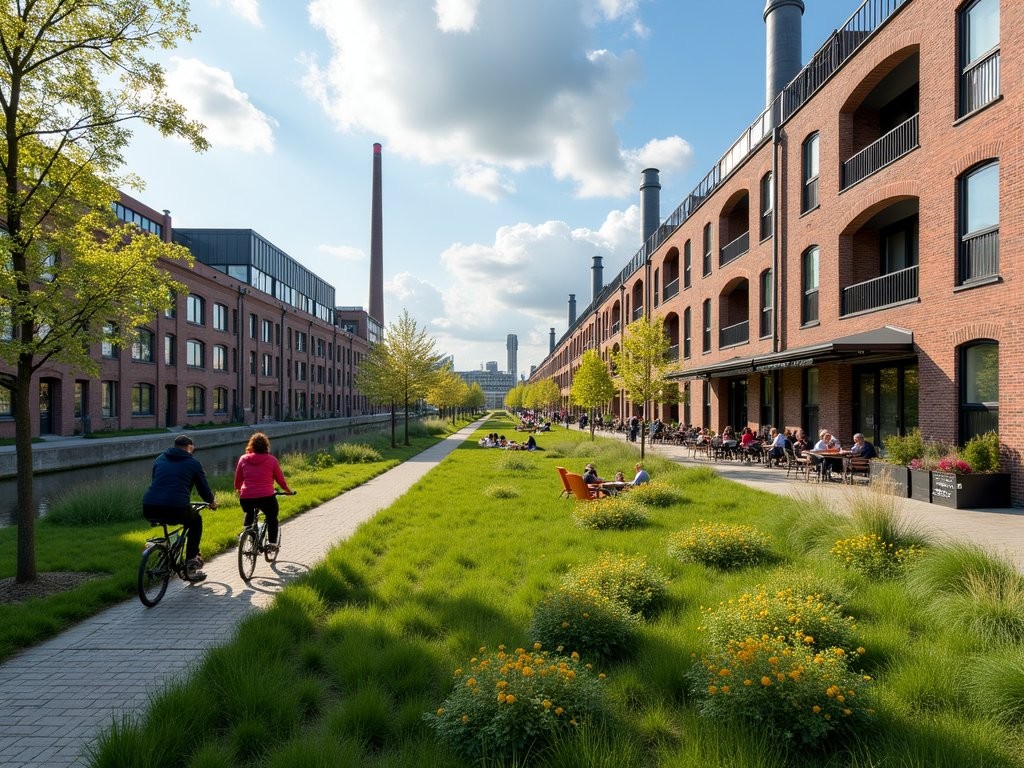
💡 Pro Tips
- Check westergasfabriek.nl for event calendars as the space hosts everything from food festivals to vinyl markets
- Visit Pacific Amsterdam within the complex for excellent coffee and workspace if you need to catch up on emails
- Explore the northern edge of the park where locals set up unofficial BBQs on warm spring evenings
The Literary Side of Amsterdam
Amsterdam has a rich literary tradition that extends far beyond Anne Frank's house (which, while important, now involves hours of queuing). For book lovers and those seeking intellectual stimulation, the city offers hidden literary gems that provide deeper insight into Dutch culture.
Start at Spui Square, where every Friday the city hosts a book market featuring everything from rare first editions to contemporary Dutch fiction. What makes this market special is the community of booksellers who've been trading here for decades – many speak excellent English and can recommend translated works by Dutch authors that capture the essence of the city. I found a beautiful illustrated edition of 'The Evenings' by Gerard Reve, considered the Dutch post-war masterpiece, that has become one of my most treasured souvenirs.
Nearby is my favorite bookstore in Europe: Athenaeum Boekhandel. Their English-language section is expertly curated, focusing on translated Dutch works and international literature that rarely makes U.S. bestseller lists. The staff leave handwritten recommendation notes that have led me to some remarkable discoveries. Their magazine section upstairs features independent publications from across Europe – perfect for finding unique design and fashion periodicals.
For a truly local literary experience, seek out OBA (Amsterdam's public library) near Central Station. This architectural marvel isn't just for residents – visitors can enjoy the panoramic views from the top-floor café, browse international newspapers, and attend free cultural events. What most tourists don't realize is that OBA hosts English-language literary events nearly every week, from author readings to translation workshops.
The American Book Center on Spui might sound like a tourist trap, but it's actually a beloved institution with an exceptional selection of art and design books. Their 'Treehouse' space hosts intimate author events, and their staff includes expats who've been Amsterdam residents for decades and can offer insider recommendations.
I always travel with a book light for reading in Amsterdam's atmospheric cafés where lighting can be romantically dim. Dutch café culture encourages lingering with a book – you'll see locals spending entire afternoons reading while nursing a single coffee, a practice that would get you side-eye in many American cities.

💡 Pro Tips
- Visit the book market on Fridays between 10am-6pm for the best selection
- Look for 'English spoken' signs in bookstore windows - many shops offer service in multiple languages
- Ask booksellers specifically for translated Dutch authors to discover literature beyond the internationally famous names
The New Dutch Cuisine in Oost
Forget the tourist-trap restaurants serving mediocre versions of 'traditional Dutch food.' Amsterdam's most exciting culinary experiences are happening in the eastern district (Oost), where innovative chefs are redefining Dutch cuisine through a multicultural, sustainability-focused lens.
My absolute favorite discovery is Rijsel in the Frankendael neighborhood. Hidden in what looks like a former school building, this restaurant specializes in rotisserie chicken – seemingly simple but executed with extraordinary precision. The Dutch-Flemish menu changes weekly based on seasonal availability, and they work directly with small farms outside Amsterdam. Their wine list focuses on natural producers, with many options available by the glass. What makes Rijsel special is the atmosphere – unpretentious, lively, and filled with locals celebrating special occasions.
For a more casual but equally authentic experience, seek out Bakers & Roasters in Oost (they have a location in De Pijp too, but the eastern outpost is less discovered). Their Dutch-Kiwi-Brazilian fusion brunch represents modern Amsterdam's multicultural identity. Their eggs benedict with Dutch smoked mackerel and hollandaise infused with genever (traditional Dutch gin) perfectly exemplifies how international influences have revitalized traditional ingredients.
Amsterdam's Indonesian connection (from colonial history) has created a unique food tradition: rijsttafel (rice table). Skip the tourist versions in the center and head to Blauw in Oost, where locals go for special occasions. This elaborate meal consists of numerous small dishes served with rice – a feast designed for sharing and conversation. The spice levels are authentic rather than toned down for tourists.
What makes Amsterdam's food scene special is its commitment to sustainability. Restaurant De Kas exemplifies this approach – they grow many ingredients in their greenhouse and surrounding gardens, housed in a spectacular repurposed municipal greenhouse from 1926. Their fixed menu changes daily based on what's harvested that morning. Reservations are essential, but lunch is often easier to book than dinner and offers the same quality at a lower price point.
I always bring a small pocket notebook to record memorable dishes and wines – Amsterdam's food scene is evolving so quickly that recommendations from even a year ago might be outdated. The best strategy is to ask local residents where they celebrated their last birthday – that's how I've found every exceptional meal in this city.
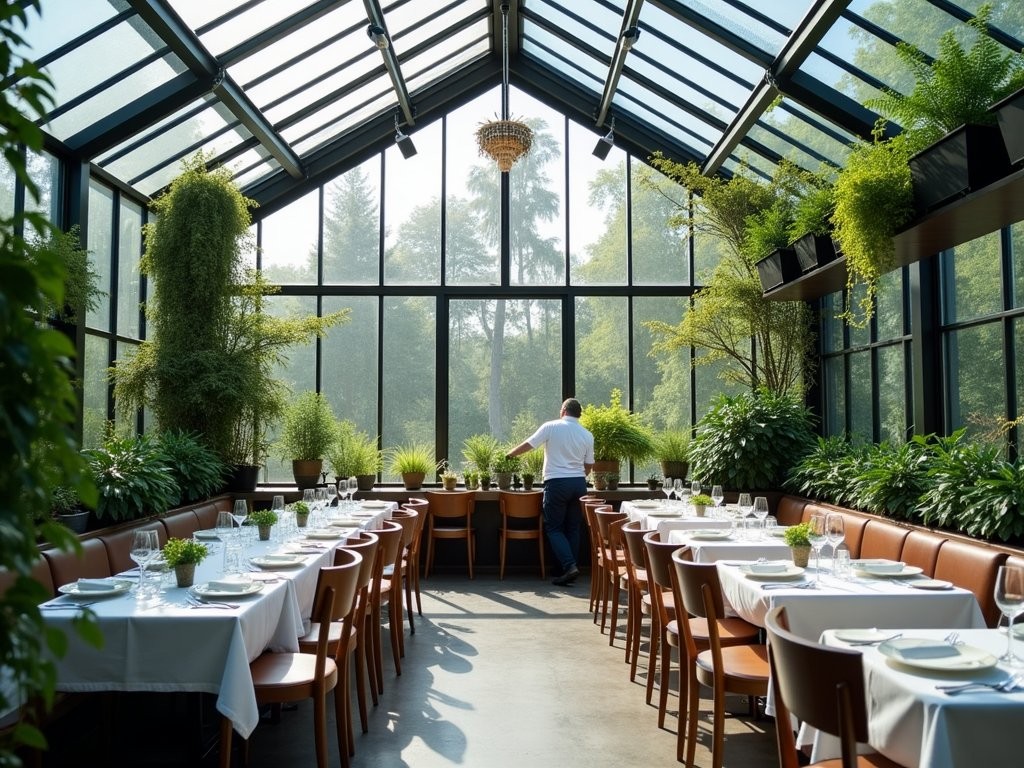
💡 Pro Tips
- Make reservations at least two weeks in advance for popular spots like Rijsel and De Kas
- Look for 'dagschotel' (dish of the day) options which often provide excellent value
- Eat dinner earlier than you might in other European cities - many Amsterdam kitchens start serving at 5:30pm and close by 10pm
Final Thoughts
Amsterdam reveals itself slowly to those willing to step beyond the well-worn tourist paths. What I've come to appreciate most about this city is how it balances preservation and innovation – historic canal houses might contain cutting-edge design studios, and centuries-old traditions evolve rather than calcify. The hidden gems I've shared aren't just about avoiding crowds; they're about experiencing the authentic rhythm of a city that's constantly reinventing itself while honoring its past. As a visitor who straddles the line between work trips and leisure exploration, I've found that Amsterdam rewards curiosity and spontaneity more than rigid itineraries. So grab a bike, get purposefully lost in residential neighborhoods, and don't be afraid to push open that unmarked door – it might just lead to a secret garden, an innovative cocktail, or a conversation that becomes your favorite Amsterdam memory. The city's true magic lies in these unexpected moments of discovery that no guidebook can fully capture.
✨ Key Takeaways
- Amsterdam's most authentic experiences happen in residential neighborhoods like Oost, Noord, and Oud-West
- Spring is ideal for exploring the city's hidden gardens, particularly the hofjes in the Jordaan
- Local food and drink scenes focus on sustainability and seasonal ingredients with Dutch-colonial influences
- The city rewards spontaneous exploration – some of the best discoveries have unmarked doors or are hidden within seemingly ordinary buildings
📋 Practical Information
Best Time to Visit
Mid-April to early June for mild weather and blooming gardens
Budget Estimate
€150-250 per day for a couple (excluding accommodation)
Recommended Duration
3-4 days minimum to explore beyond tourist areas
Difficulty Level
Easy - The Compact City Center And Excellent Public Transport Make Navigation Simple

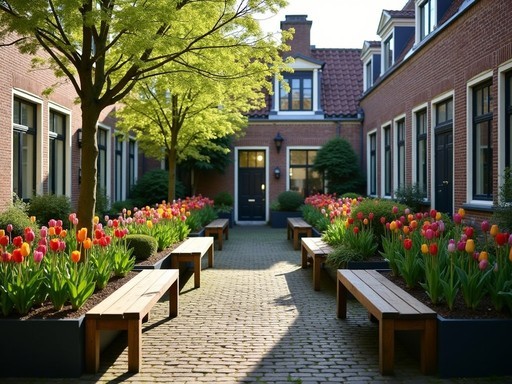
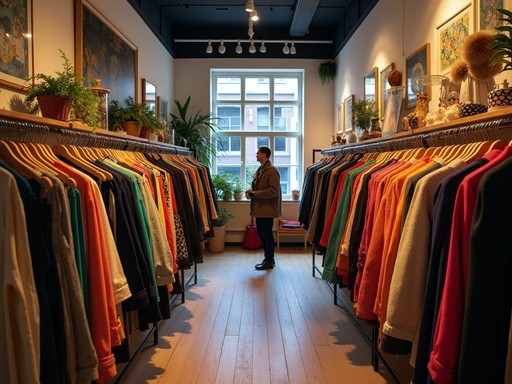
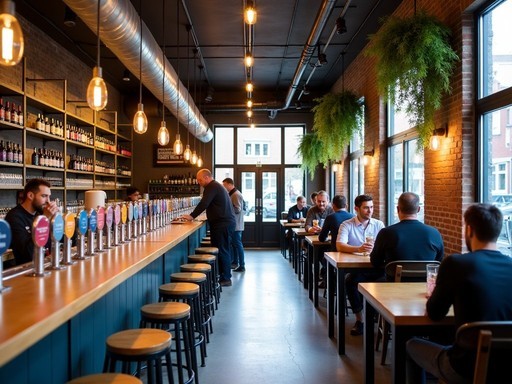
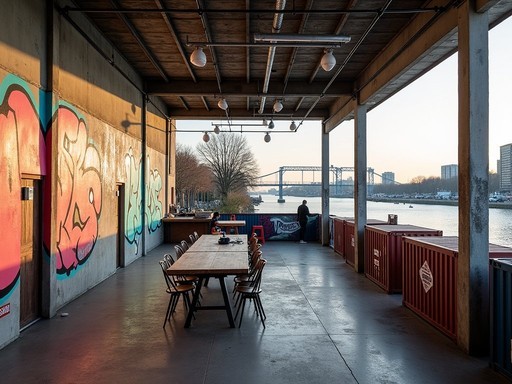
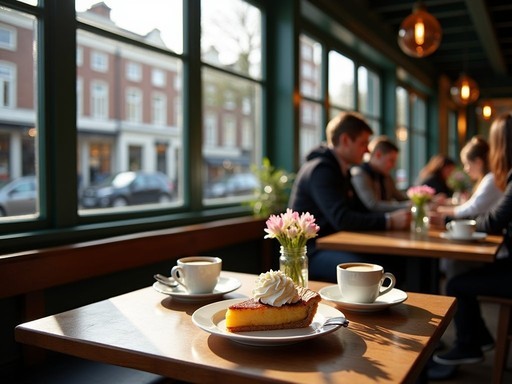
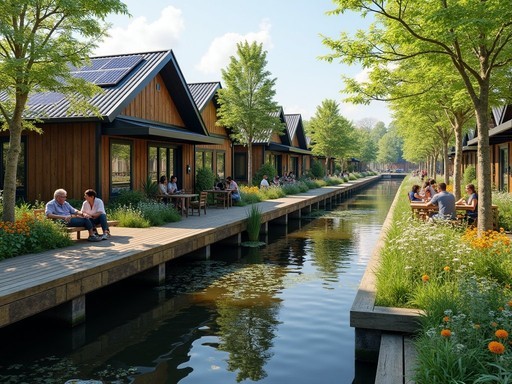


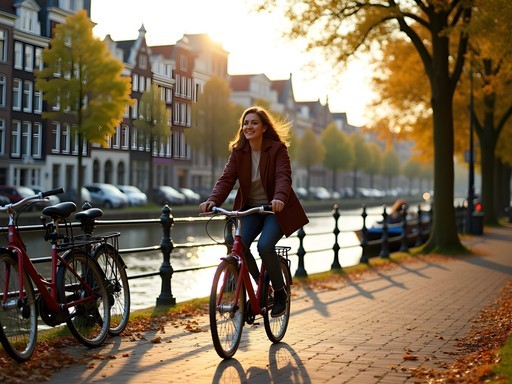
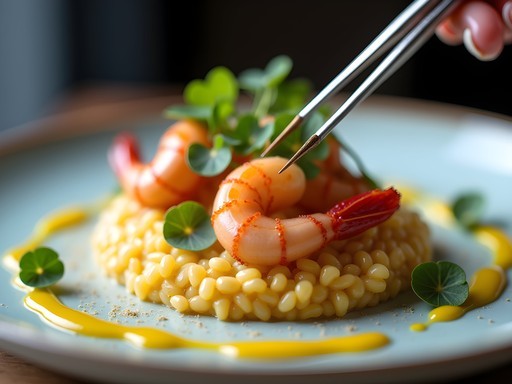
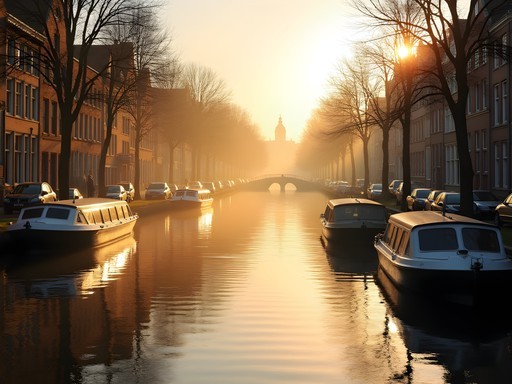

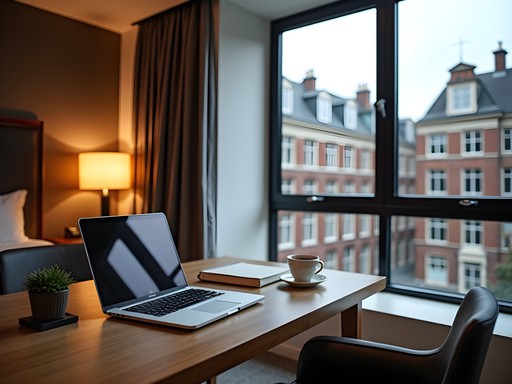
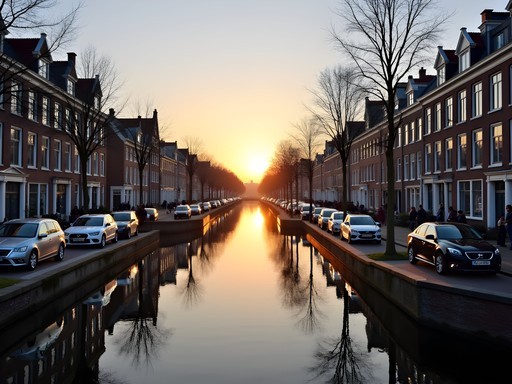
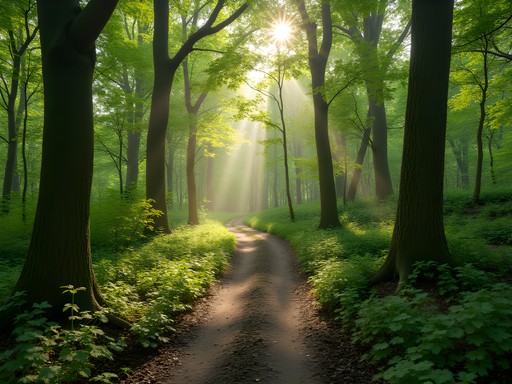
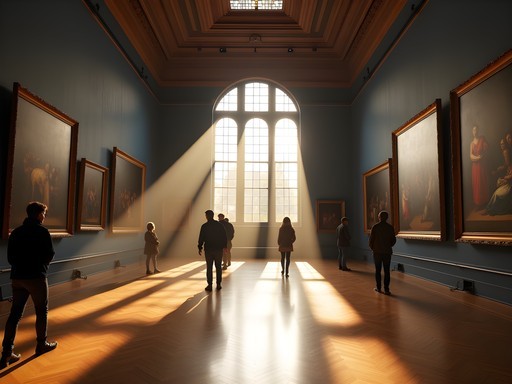
Comments
travelblogger
I've been to Amsterdam 3 times and never knew about these Noord art warehouses! Feels like I've been missing out on the real Amsterdam experience. Just booked tickets for April and I'm definitely checking out the micro-brewery trail. Anyone have recommendations for which ones have the best atmosphere for solo travelers? I tend to get a bit shy when traveling alone but love meeting locals over a good beer.
wildone
Oedipus Brewing in Noord has communal tables and super friendly staff. Great place to chat with locals!
travelblogger
Thanks! Adding it to my list. Did you find it easy to get there from the city center?
wildone
Super easy! Ferry + 10 min walk or quick bike ride. They sometimes have food trucks outside too which is a bonus.
vacationguy
Just got back from Amsterdam and hit up De Pijp for vintage shopping. Spot on recommendation!
Claire Hawkins
Jose, your post brought back so many memories! I visited Amsterdam with my family last summer and we followed your advice about the Secret Gardens of Jordaan. My kids absolutely loved the hidden Karthuizerhof garden - felt like we'd discovered a magical secret in the middle of the city! We also used the Amsterdam City Card which was perfect for a family since it included public transport and entry to several museums. The microbrewery trail was more for me and my husband (date night!), but Brouwerij 't IJ was our favorite - that windmill setting is unbeatable!
vacationguy
The brewery in the windmill is amazing! Did you try their IPA?
Claire Hawkins
Yes! The IJwit (their white beer) was my favorite though. Perfect on a sunny afternoon!
wildone
Great post! I'm heading to Amsterdam next month. How's the public transport for getting to these hidden spots, especially the Noord art warehouses?
Jose McDonald
The free ferry from Central Station takes you right to Noord in about 5 minutes! Then rent a bike when you arrive - best way to explore the warehouse district.
wildone
Thanks Jose! Definitely adding that to my itinerary. Any specific warehouse I shouldn't miss?
Jose McDonald
NDSM Wharf is the main hub - huge former shipyard with constantly changing exhibitions. Check their website before you go as events change weekly!
travelmood
THANK YOU FOR THIS POST!!! I've been to Amsterdam twice but only did touristy stuff. Going back in 3 weeks and printing this entire article!!! Those hidden art warehouses sound AMAZING. Has anyone done the vintage shopping in De Pijp? Worth it? I'm obsessed with finding unique pieces when I travel!
journeylover
The vintage shops are great but pricey. Try the monthly market at Noordermarkt on Mondays for better deals.
travelmood
Perfect timing - I'll be there on a Monday! Thanks for the tip!
journeyqueen
Just got back from Amsterdam and used this guide extensively! The micro-brewery trail was a highlight - Oedipus Brewing in Noord was our favorite. So much more interesting than the Heineken Experience. We also discovered this amazing community garden behind the Begijnhof that wasn't even mentioned here. It was so peaceful with locals tending to their plots. We spent an afternoon just wandering the Jordaan area with my pocket guide and stumbled upon a small neighborhood concert in someone's living room - apparently it's called 'Huiskamerconcerten' (living room concerts). Definitely check the local listings if you're visiting!
coolstar9014
Any food recommendations in De Pijp area?
journeyqueen
Not the author but I was just there! Try Bazar on Albert Cuypstraat - amazing Middle Eastern food in this converted church with the coolest atmosphere. Also, there's this tiny place called Little Collins that does the best brunch. Get the kimchi pancakes!
coolstar9014
Thanks! Adding those to my list!
Jean Wells
Excellent overview of Amsterdam's less-visited corners, Jose. I've been documenting the evolution of Noord over the past decade, and it's fascinating how these former industrial spaces have transformed into creative hubs. The NDSM Wharf area deserves particular attention - beyond the art warehouses you mentioned, I'd recommend visitors time their trip with the monthly IJ-Hallen flea market. It's Europe's largest, and the vintage finds are extraordinary. The ferry journey across from Centraal Station provides a perfect perspective of the city's contrasting architectural styles as well.
travelmood
Omg I didn't know about that flea market!! When exactly does it happen? I'm going next month and would LOVE to check it out!
Jean Wells
It's typically the first weekend of each month, but do check their website as dates occasionally shift. Arrive early - the best items go quickly!
journeylover
Those secret gardens in Jordaan are amazing! Found a tiny one last summer with barely anyone there.
coffeetime
Going to Amsterdam next month! Which microbrewery would you recommend for someone who likes lighter beers? Also, is public transportation good for reaching these hidden spots or should I rent a bike?
Jose McDonald
For lighter beers, definitely try Brouwerij Troost in De Pijp! Their pilsner and white beer are fantastic. As for getting around, Amsterdam's public transport is excellent, but nothing beats experiencing the city by bike. I used a city bike rental during my stay and it was perfect for discovering these hidden spots!
coffeetime
Thanks so much! I'll definitely check out Troost. A bit nervous about biking there with all the traffic, but maybe I'll give it a try!
Frank Carter
Don't worry about the biking! Amsterdam drivers are super used to cyclists. Just follow the locals and you'll be fine. And I second Troost - their tasting flight is a great way to try different styles.
Venture X
Premium card with 2X miles, $300 travel credit, Priority Pass